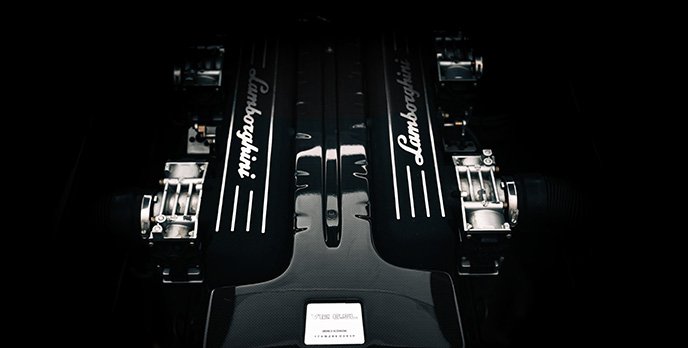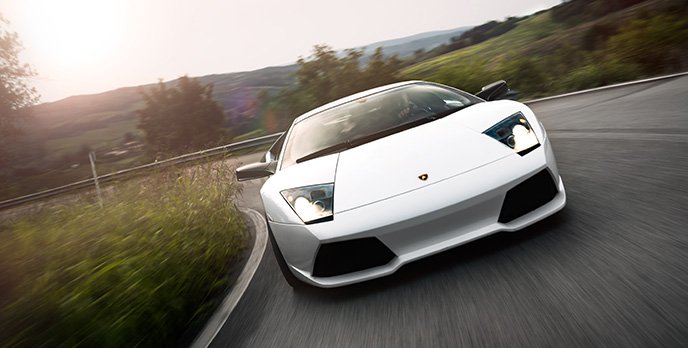Lamborghini celebrates its mad and wonderful Murcielago
26 Sep 2022|835 views
Say the words 'Lamborghini' and 'V12', and most people will think of the Lamborghini Aventador, the company's outgoing V12 powered model. Not many will remember the Aventador's predecessor, the mighty Murcielago. However, the Murcielago is not completely forgotten.
Lamborghini is celebrating its V12 this year and is commemorating the models that have featured this most dramatic of engines. This time round, the spotlight is on the Murcielago, a Lamborghini dear to the heart of car enthusiasts who were born in the 90s, due to it being the Lamborghini halo car when they were growing up.
The Murcielago debuted in September 2001 and had the task of taking the historical V12 engine into the 21st century. The engine did this in the most extraordinary way, given that when the Murcielago coupe debuted, the 6.2-litre engine had a power output of 572bhp.
The Murcielago coupe was then joined by the roadster version in 2004. The second-generation Murcielago models, formally the Murcielago LP 640-4 (both coupe and roadster), made their debut in 2007 and remained in production with the V12 delivering an increased 631bhp at 8,000rpm until 2010.
All Murcielagos were all-wheel drive, with the system borrowed directly from that of the Diablo. The carbon fibre undercarriage with a mixed-structure floor panel with aluminum, boasted the most rigid supporting structure ever produced by Lamborghini.

 The Murcielago's V12 pushed out 572bhp in its most basic guise, and sounded absolutely glorious in the process It was also the first Lamborghini to be entirely designed using the CAD-CAM system, guaranteeing design precision of the highest level, and allowing a significantly higher quality of assembly and finish.
The Murcielago's V12 pushed out 572bhp in its most basic guise, and sounded absolutely glorious in the process It was also the first Lamborghini to be entirely designed using the CAD-CAM system, guaranteeing design precision of the highest level, and allowing a significantly higher quality of assembly and finish.
Purists would be keen to know that the Murcielago was the last Lamborghini to come with a mechanical transmission. Later, the manual transmission was complemented by an electronic automated transmission with gear sequence via levers located behind the steering wheel.
In February 2002, Lamborghini took a Murcielago to the test track in Nardo to set a new world speed record for a production car. The goal was accomplished, with 305km travelled in one hour at an average speed on the fastest lap of 325.98km/h. When you consider the 10 year newer Aventador has a top speed of just 25km/h more than that average speed, that makes the old bull seem like an overperformer.
Lamborghini is celebrating its V12 this year and is commemorating the models that have featured this most dramatic of engines. This time round, the spotlight is on the Murcielago, a Lamborghini dear to the heart of car enthusiasts who were born in the 90s, due to it being the Lamborghini halo car when they were growing up.
The Murcielago debuted in September 2001 and had the task of taking the historical V12 engine into the 21st century. The engine did this in the most extraordinary way, given that when the Murcielago coupe debuted, the 6.2-litre engine had a power output of 572bhp.
The Murcielago coupe was then joined by the roadster version in 2004. The second-generation Murcielago models, formally the Murcielago LP 640-4 (both coupe and roadster), made their debut in 2007 and remained in production with the V12 delivering an increased 631bhp at 8,000rpm until 2010.
All Murcielagos were all-wheel drive, with the system borrowed directly from that of the Diablo. The carbon fibre undercarriage with a mixed-structure floor panel with aluminum, boasted the most rigid supporting structure ever produced by Lamborghini.

Purists would be keen to know that the Murcielago was the last Lamborghini to come with a mechanical transmission. Later, the manual transmission was complemented by an electronic automated transmission with gear sequence via levers located behind the steering wheel.
In February 2002, Lamborghini took a Murcielago to the test track in Nardo to set a new world speed record for a production car. The goal was accomplished, with 305km travelled in one hour at an average speed on the fastest lap of 325.98km/h. When you consider the 10 year newer Aventador has a top speed of just 25km/h more than that average speed, that makes the old bull seem like an overperformer.
Say the words 'Lamborghini' and 'V12', and most people will think of the Lamborghini Aventador, the company's outgoing V12 powered model. Not many will remember the Aventador's predecessor, the mighty Murcielago. However, the Murcielago is not completely forgotten.
Lamborghini is celebrating its V12 this year and is commemorating the models that have featured this most dramatic of engines. This time round, the spotlight is on the Murcielago, a Lamborghini dear to the heart of car enthusiasts who were born in the 90s, due to it being the Lamborghini halo car when they were growing up.
The Murcielago debuted in September 2001 and had the task of taking the historical V12 engine into the 21st century. The engine did this in the most extraordinary way, given that when the Murcielago coupe debuted, the 6.2-litre engine had a power output of 572bhp.
The Murcielago coupe was then joined by the roadster version in 2004. The second-generation Murcielago models, formally the Murcielago LP 640-4 (both coupe and roadster), made their debut in 2007 and remained in production with the V12 delivering an increased 631bhp at 8,000rpm until 2010.
All Murcielagos were all-wheel drive, with the system borrowed directly from that of the Diablo. The carbon fibre undercarriage with a mixed-structure floor panel with aluminum, boasted the most rigid supporting structure ever produced by Lamborghini.

 The Murcielago's V12 pushed out 572bhp in its most basic guise, and sounded absolutely glorious in the process It was also the first Lamborghini to be entirely designed using the CAD-CAM system, guaranteeing design precision of the highest level, and allowing a significantly higher quality of assembly and finish.
The Murcielago's V12 pushed out 572bhp in its most basic guise, and sounded absolutely glorious in the process It was also the first Lamborghini to be entirely designed using the CAD-CAM system, guaranteeing design precision of the highest level, and allowing a significantly higher quality of assembly and finish.
Purists would be keen to know that the Murcielago was the last Lamborghini to come with a mechanical transmission. Later, the manual transmission was complemented by an electronic automated transmission with gear sequence via levers located behind the steering wheel.
In February 2002, Lamborghini took a Murcielago to the test track in Nardo to set a new world speed record for a production car. The goal was accomplished, with 305km travelled in one hour at an average speed on the fastest lap of 325.98km/h. When you consider the 10 year newer Aventador has a top speed of just 25km/h more than that average speed, that makes the old bull seem like an overperformer.
Lamborghini is celebrating its V12 this year and is commemorating the models that have featured this most dramatic of engines. This time round, the spotlight is on the Murcielago, a Lamborghini dear to the heart of car enthusiasts who were born in the 90s, due to it being the Lamborghini halo car when they were growing up.
The Murcielago debuted in September 2001 and had the task of taking the historical V12 engine into the 21st century. The engine did this in the most extraordinary way, given that when the Murcielago coupe debuted, the 6.2-litre engine had a power output of 572bhp.
The Murcielago coupe was then joined by the roadster version in 2004. The second-generation Murcielago models, formally the Murcielago LP 640-4 (both coupe and roadster), made their debut in 2007 and remained in production with the V12 delivering an increased 631bhp at 8,000rpm until 2010.
All Murcielagos were all-wheel drive, with the system borrowed directly from that of the Diablo. The carbon fibre undercarriage with a mixed-structure floor panel with aluminum, boasted the most rigid supporting structure ever produced by Lamborghini.

Purists would be keen to know that the Murcielago was the last Lamborghini to come with a mechanical transmission. Later, the manual transmission was complemented by an electronic automated transmission with gear sequence via levers located behind the steering wheel.
In February 2002, Lamborghini took a Murcielago to the test track in Nardo to set a new world speed record for a production car. The goal was accomplished, with 305km travelled in one hour at an average speed on the fastest lap of 325.98km/h. When you consider the 10 year newer Aventador has a top speed of just 25km/h more than that average speed, that makes the old bull seem like an overperformer.
Latest COE Prices
October 2025 | 2nd BIDDING
NEXT TENDER: 05 Nov 2025
CAT A$122,000
CAT B$131,889
CAT C$76,801
CAT E$136,000
View Full Results Thank You For Your Subscription.



























